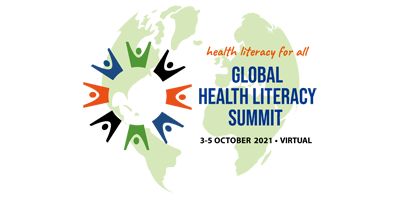Abstract Preview
Abstract
|
Title The relationship between health literacy and health-related quality of life in Beijing adolescents |
|
Type Oral Presentation Only |
|
Theme Global Health Literacy Summit 2021 |
|
Topic Health literacy in adolescence |
Authors
|
Main Author Shuaijun (Jun) Guo1 2 3 |
|
Presenting Author Shuaijun (Jun) Guo1 2 3 |
|
Co-Author Xiaoming Yu4 Elise Davis2 Rebecca Armstrong2 Lucio Naccarella2 |
Authors' Institution
|
Department / Institution / Country Centre for Community Child Health / Murdoch Children’s Research Institute / Australia1 Melbourne School of Population and Global Health / They University of Melbourne / Australia2 Department of Pediatrics / The University of Melbourne / Australia3 Institute of Child and Adolescent Health, School of Public Health / Peking University / China (中国)4 |
|
Abstract Content (abstracts should be written in Size 11 font, Arial font style) Background: Health literacy, defined as the ability to engage with health information and services in everyday life, is an essential part of achieving the Sustainable Development Goal. While the relationship health literacy and health-related quality of life is well-established in adults particularly those with chronic diseases, little is known in adolescents, a relatively healthy population. Aims: The present study aims to investigate how health literacy is related to its antecedents and health-related quality of life in Beijing adolescents, using Manganello’s health literacy framework. Methods: A cross-sectional study was conducted with 650 students in Years 7 to 9 from four secondary schools in Beijing. Based on Manganello’s health literacy framework, a self-administered questionnaire was designed to collect information on health literacy, its antecedents (self-efficacy, social support, school environment and community environment), and health-related quality of life. Health literacy was measured by the 8-item Health Literacy Assessment Tool (score range: 0-37) and health-related quality of life was measured by the 10-item KIDSCREEN-10 (score range: 10-50). Path analysis was used to investigate the mediating role of health literacy in predicting health-related quality of life. Results: Overall, students scored 26.37±5.89 and 37.49±5.78 for health literacy and health-related quality of life, respectively. There was no mediating effect of health literacy on the relationship between its antecedents and health-related quality of life. Instead, health literacy and health-related quality of life were independent health outcomes. Students’ health literacy was determined by self-efficacy (r=0.11, p=0.007), social support (r=0.18, p<0.001) and school environment (r=0.27, p<0.001), whereas health-related quality of life was predicted by social support (r=0.45, p<0.001), school environment (r=0.23, p<0.001) and community environment (r=0.12, p<0.001). Conclusion: This study suggests that health literacy is not directly related to health-related quality of life in a healthy population of adolescents, but they have common determinants such as social support and school environment. A holistic approach is needed to increase personal self-efficacy, promote social support, and create positive school and community environments, in order to achieve optimal health outcomes for adolescents. |
Requires Audio or Video system for Presentation?: No
